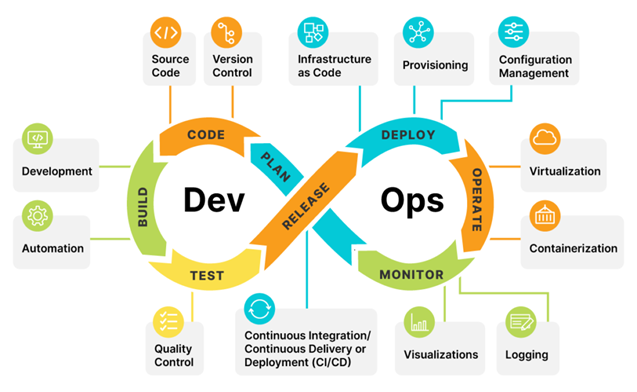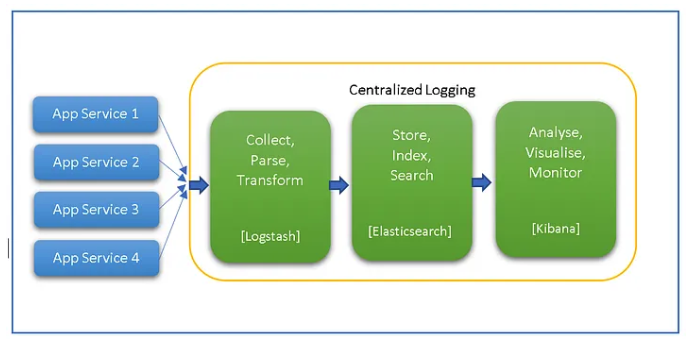Achieving DevOps Harmony With Unified Log Monitoring for CI/CD
Unifying log monitoring in DevOps to enhance CI/CD processes. Learn about the challenges and best practices for efficient and reliable software delivery.
Join the DZone community and get the full member experience.
Join For FreeIn modern software development, DevOps methods have evolved into the pillar of dependable and effective product delivery. Two methods that particularly help automate and simplify the software release process are continuous integration (CI) and continuous deployment (CD). But as software systems get more complicated, so does the necessity for strong log monitoring systems that can unite and streamline log management at several CI/CD phases.
This article explores the need for uniting log monitoring in DevOps, the associated difficulties, and approaches for achieving harmony in CI/CD processes.
The Role of Log Monitoring in DevOps

Maintaining the performance and health of apps over the DevOps life depends mostly on log monitoring. It offers crucial information that lets teams guarantee seamless operations and diagnose problems. These are the main reasons log monitoring is essential in a DevOps setting:
Enhancing Visibility and Transparency
In DevOps, log monitoring is essential to improve visibility and openness through the software development process. It gives teams real-time performance, security, and compliance status analysis of apps so they can quickly find and fix problems. Teams can continuously check the state of their apps and infrastructure by including log monitoring into CI/CD pipelines, ensuring effective operations.
Logs offer a detailed record of events that can be analyzed to understand what has happened in the past, diagnose issues, and predict future problems. Frequent changes in a CI/CD system value a clear, real-time perspective of what's happening throughout the whole stack.
Proactive Issue Detection
By recognizing irregularities and setting off alarms, automated monitoring systems let teams react quickly to possible hazards. By reducing system downtime and business interruptions, this proactive strategy guarantees end-users greater quality of service.
Setting up automated warnings for odd trends or mistakes proactively alerts DevOps teams. Teams can notice sudden increases in error rates or decreases in response times, for example, and address issues before they impact end customers. Maintaining the high-performance criteria and availability expected in contemporary software systems depends especially on this.
Challenges in Log Monitoring for CI/CD
Although log monitoring has obvious advantages, successfully implementing it in a CI/CD system presents certain difficulties. Maintaining a dependable and effective software delivery pipeline depends on overcoming these obstacles.
Handling High Volumes of Logs
CI/CD processes create a lot of logs — build, deployment, and application logs, as well as other types. Dealing with and evaluating this vast number can be taxing and financially draining. Teams should use scalable log management systems that can effectively handle vast amounts without sacrificing performance.
Microservices designs adopted by DevOps teams might cause exponential multiplication of log count. Each microservice, container, and server generates distinct logs, which collectively form a complex and extensive data landscape. Key insights can be lost in the noise without a scalable log management system.
Ensuring Log Consistency
Many tools and systems create logs in a CI/CD pipeline, each with its own structure and format. One major difficulty in log data is guaranteeing consistency and homogeneity. Standardizing log forms and implementing centralized logging systems can make log management more efficient and data correlation across multiple pipeline phases easier.
Different log forms and structures can hinder the effectiveness of log analysis. One tool might log timestamps in a different style than another, for example, which would make system correlation challenging.
Standardizing log formats ensures that every log can be consumed and examined consistently, offering a whole picture of the condition of the system.
Strategies for Unifying Log Monitoring

Unifying log monitoring successfully in a CI/CD system requires thought-out strategies and technological solutions. These techniques can be useful:
1. Centralized Log Management
Centralized systems simplify log search, analysis, and visualization by gathering logs from multiple sources and saving them in a single repository. For centralized log management, tools including Middleware, Elasticsearch, Logstash, and Kibana (ELK stack) are common.
Along with streamlining log collecting, centralized log management solutions offer strong tools for displaying and searching log data. This helps DevOps teams to identify trends, fix problems, and understand the effects of modifications all over the system.
2. Log Aggregation and Parsing
Log aggregation compiles logs from multiple sources into a coherent structure. Parsing tools can subsequently extract meaningful information from logs, transforming them into organized data. This system helps teams better understand their CI/CD pipelines and streamline log analysis.
Aggregating and parsing logs allows for the normalization of log data, thereby facilitating this type of analysis. A log parser can translate, for instance, JSON format problems logged in an application into a standard schema, therefore enabling thorough analysis even if a server publishes errors in plain text.
3. Automated Monitoring and Alerts
Automated monitoring programs constantly track log data and set alarms depending on established criteria. These tools can detect trends and anomalies, alerting teams in operations and development.
Automated alerts ensure that any problems are promptly brought to the notice of the relevant teams, enabling quick resolutions.
Teams can also cooperate more effectively by combining these alarms with communication tools. Combining alerting systems with communication tools like Slack or Microsoft Teams helps to improve response times and teamwork even further.
Case Studies and Real-Life Examples
Consider the following examples to learn more about the benefits of log monitoring:
GitHub Workflows
GitHub's CI/CD processes are an outstanding example of efficient log monitoring. GitHub can track code changes, find conflicts, and guarantee flawless ongoing development by including log monitoring tools in Git processes. This method speeds development and helps to preserve code quality.
GitHub carefully checks every code modification before merging, using a mix of automated testing and log monitoring. This method tests every pull request and uses log data to identify any issues that arise. GitHub can guarantee high-quality code modifications without new issues by including log monitoring into the CI/CD process.
Application Performance Monitoring
Application Performance Monitoring (APM) tools are used by many companies to keep an eye on the state of their systems. These tools let teams rapidly find and fix performance bottlenecks by offering real-time views of application uptime, response times, and transaction volumes.
An e-commerce corporation might utilize APM technologies, for instance, to track website performance during a significant sales event. Monitoring indicators like page load times and transaction volumes helps the business to make sure that, even with a lot of users, its website stays responsive and efficient. Should problems arise, log monitoring technologies enable the identification of the underlying cause, allowing for faster resolution.
Best Practices for Effective Log Monitoring
Following best practices catered to your particular DevOps system helps you to guarantee that log monitoring is efficient and successful. These are some main suggestions:
1. Define Clear Monitoring Goals
Teams that identify clear goals and objectives will make log monitoring more successful. Having well-defined goals helps in choosing the appropriate monitoring tools and metrics, whether the objective is to guarantee compliance, enhance security, or improve system performance.
Well-defined objectives guide the log monitoring system's configuration and setup. For example, if security is the main objective, the emphasis may be on tracking access records and spotting odd login attempts. Should performance optimization be the aim, the emphasis might move to tracking response times and resource allocation.
2. Focus on Critical Metrics
Not all log data is equally useful. Teams should focus on collecting and evaluating important benchmarks that directly influence their monitoring objectives. Giving critical performance indicators (KPIs) such as response times, error rates, and resource use top priority ensures that monitoring initiatives align with corporate objectives.
With regard to practical insights, critical metrics offer the highest value. Tracking error rates can expose stability problems; measuring response times might help to find performance bottlenecks. Teams that concentrate on these indicators can guarantee that their efforts at monitoring are efficient and successful.
3. Continuous Review and Improvement
Log monitoring is an always-changing process rather than a one-time arrangement. Teams should always assess their tools' performance, go over their monitoring plans, and make required changes. Monitoring settings are frequently updated based on feedback and changing criteria to ensure that log monitoring remains relevant and efficient.
Continuous improvement involves iterating on the monitoring system based on acquired knowledge. For instance, if an alert threshold proves to be overly sensitive and frequently triggers false alarms, we may modify it to reduce noise. Reviewing and improving monitoring plans ensures that they remain relevant to the company's changing needs.
Conclusion
Effective log monitoring techniques provide visibility, openness, and proactive issue detection across the DevOps lifeline, guaranteeing seamless and effective operations.
Effective DevOps plans depend on strong and consistent log monitoring, which helps teams produce high-quality software regularly and effectively. Organizations can ensure that their CI/CD systems are robust, scalable, and capable of satisfying the needs of contemporary software development by adopting the stated methodologies and best practices.
Opinions expressed by DZone contributors are their own.

Comments